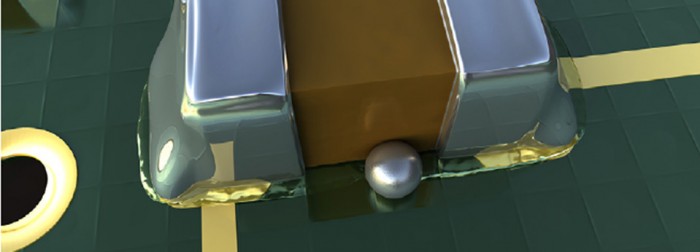Avoid the Void®: Voiding in Gold-Tin (AuSn20) Solder Joints
Phil Zarrow: Andy, for years, people have been using gold-tin in high-temperature applications, but we have the ongoing problem of voiding.
Andy C. Mackie, PhD, MSc: It's not just high-temperature applications, but LED applications where the high thermal electrical connectivity are a prerequisite for the usefulness of the solder. What we've noticed is that, in the last several years because people have been using gold plating on both the die side, and on the substrate side, certainly the substrate side in some instances, there's been an increase in voiding that's been seen, and it seems to correlate with the amount of gold that's present from those.
We took a look a while back at the ratio of gold that's present in terms of thickness on both the die and substrate. And tolerated that with the amount of voiding, and, again, showed that there was significant correlation between the two. What seems to be happening is the gold-tin eutectic is actually being pushed away from its minimum point at 280 degrees C, off to one side, and you can actually see this from the phase diagram. As you move to a higher gold, actually increase the liquidus quite significantly. This means that as the joint cools down from its initial phase, the voids that are present there actually shrink down as they normally do during the cooling process. But as they hit the high temperature liquidus, they're actually frozen in place by the intermetallics and they can't shrink any further. You get a minimum of voiding when you have a eutectic in the final joint.
The question then is, "Okay, well what can I do to actually reduce the amount of voiding?" By making an eutectic in the final sort of joint, rather than putting a eutectic solder into a gold sputtered system. We generated a diagram that allows our customers to use this ratio of thickness of gold that's present from both substrate and the die. Correlate that with the thickness of the preform or the thickness of the solder paste, that will be placed in between the two as part of the die-attach. Simply from that, you can calculate how off eutectic your material needs to be. Of course there's cost-saving as well, if you're moving from 80% to 79% gold, there's quite a significant cost saving obviously from the reduction of gold.
So you move to higher tin so the final reflowed joint. The solder from the gold is melting into this off eutectic material will then achieve its eutectic and then you'll have a minimized void.
Phil Zarrow: Andy, what is Indium Corporation's recommendations to resolve this problem?
Andy C. Mackie, PhD, MSc: If customers are having these issues with gold sputtered, or gold plated components, and they're having voiding issues of this type, with the eutectic gold tin solder, we can make recommendations on which solder would be most appropriate, we can supply it in either preform or gold-tin solder paste, or even in wire form as needed by the customer.
Phil Zarrow: I understand you have information on this on your blog at www.indium.com.
Andy C. Mackie, PhD, MSc: Sure. I've blogged about this, and would also be very happy for anybody who's got further questions to email me [email protected], as always.
Phil Zarrow: Andy, thank you very much.
Andy C. Mackie, PhD, MSc: Phil, thank you.


